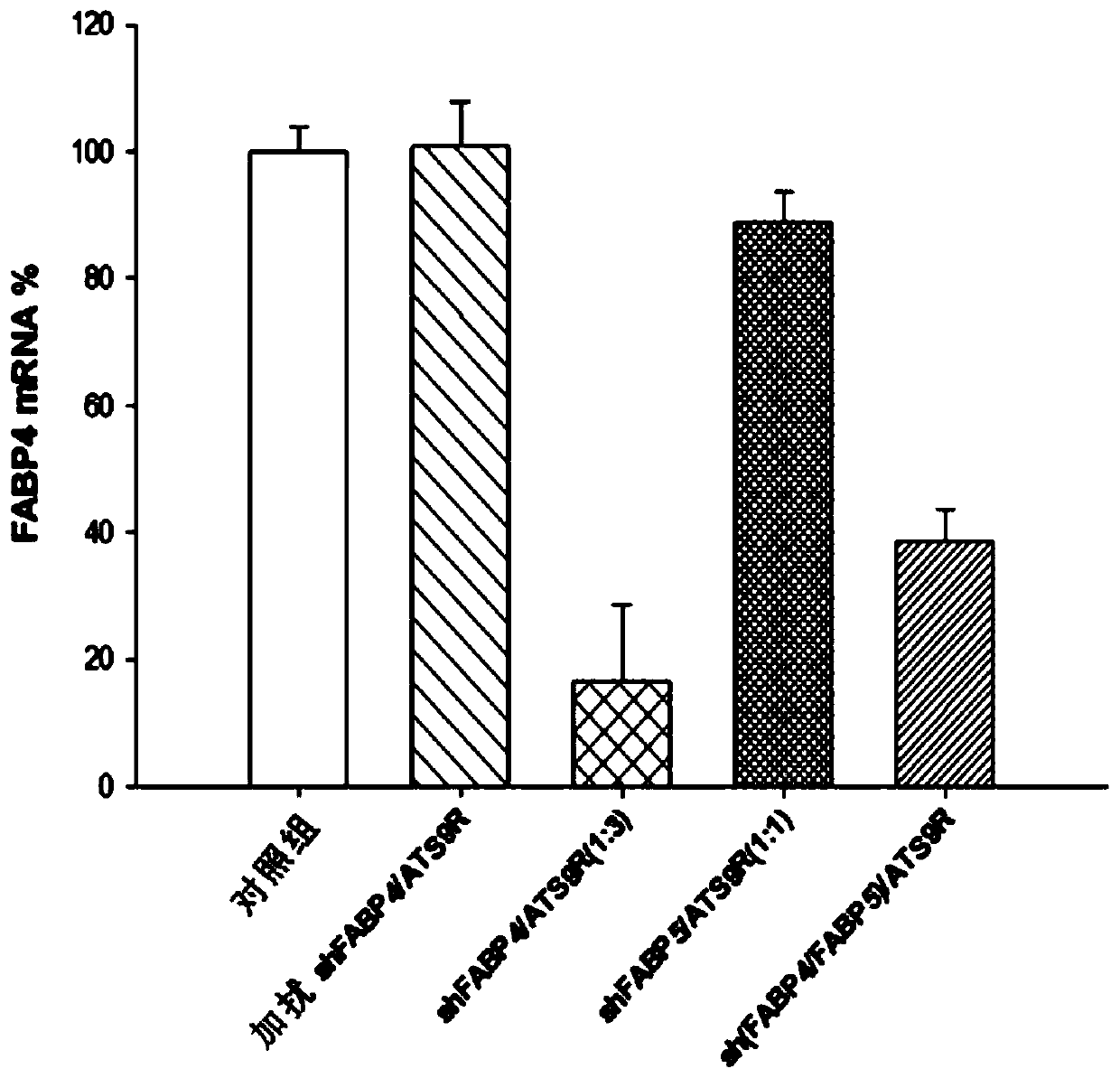Adipocyte-targeting non-viral gene delivery complex comprising dual plasmid vector
一种基因递送、脂肪细胞的技术,应用在使用载体引入外来遗传物质、载体、基因治疗等方向,能够解决未观察到体重减少效果等问题,达到细胞毒性优秀的效果
- Summary
- Abstract
- Description
- Claims
- Application Information
AI Technical Summary
Problems solved by technology
Method used
Image
Examples
Embodiment 1
[0075] Example 1. Preparation of sh(FABP4+FABP5) double plasmid vector
[0076] To prepare the sh(FABP4+FABP5) dual plasmid vector, psiRNA-DUO (InvivoGen, USA) as a dual RNAPolIII cassette vector for the expression of two shRNAs was used, and the specific process was as follows.
[0077] The test tube containing the frozen plasmid was spun to precipitate the DNA. To obtain a 1 μg / μl plasmid solution, the obtained DNA was resuspended in 20 μl of sterilized water, and the resuspended plasmid was stored at -20°C. To increase yield, transfection into the resuspended E. coli (Escherichia coli) was performed for plasmid amplification.
[0078] Next, the psiRNA-DUO plasmid was treated with Bbs I (NEB, 2 units of enzyme / μg plasmid DNA) as a restriction enzyme, and the large fragment (3180bp) was eluted with 0.7% low-melting point agarose gel, then diluted and purified A 0.1 μg / μl solution of the DNA fragment was obtained (Gus box). And, use Acc 65I and Hind III (used with NEB enzy...
Embodiment 2
[0080] Example 2. The content ratio optimization of sh(FABP4+FABP5) plasmid and ATS-9R
[0081] In order to optimize the content ratio of sh(FABP4+FABP5) plasmid and ATS-9R, using gel retardation assay, 1 μg of DNA, deionized water, and ATS-9R were mixed at room temperature according to different weight ratios. Incubate for 30 minutes to prepare oligo-peptoplex. The average diameter and surface zeta potential of the oligopeptide complexes were measured using a Zetasizer-Nano ZS (Malven Instruments, UK) DLS. Figure 1a and 1b , shows the results of gel retardation analysis and the size of the complex according to the weight ratio of sh(FABP4+FABP5) plasmid to ATS-9R, refer to Figure 1b , the optimal size can be derived when the weight ratio of sh(FABP4+FABP5) plasmid:ATS-9R is 1:2.
Embodiment 3
[0082] Example 3. Confirmation of FABP4 and FABP5 expression in adipocytes transfected with gene delivery complexes according to the present invention amount
[0083] 3T3-L1 cells, which are mouse-derived adipocytes, were differentiated into adipocytes, and shFABP4+ATS9R, shFABP4+ATS9R, shFABP5+ATS9R, sh(FABP4 / FABP5) were scrambled in the differentiated adipocytes After +ATS9R treatment, only RNA was isolated from cells using RNeasy Lipid tissue Mini kit (Qiagen) after 48 hours, and cDNA was synthesized. Thereafter, FABP4, FABP5 mRNA levels relative to GAPDH as an endogenous control were measured by RT-PCR measurement using Cyber premix EX taq RT-PCR Kit. Figure 2a and 2b shows the measurement results, refer to Figure 2a and 2b , in mature adipocytes tested in vitro, it was confirmed that the mRNA levels of FABP4 and FABP5 decreased when sh(FABP4 / FABP5)+ATS9R, which is a dual plasmid vector, was actually treated. Furthermore, when FABP4 was reduced, it was confirme...
PUM
 Login to View More
Login to View More Abstract
Description
Claims
Application Information
 Login to View More
Login to View More - R&D Engineer
- R&D Manager
- IP Professional
- Industry Leading Data Capabilities
- Powerful AI technology
- Patent DNA Extraction
Browse by: Latest US Patents, China's latest patents, Technical Efficacy Thesaurus, Application Domain, Technology Topic, Popular Technical Reports.
© 2024 PatSnap. All rights reserved.Legal|Privacy policy|Modern Slavery Act Transparency Statement|Sitemap|About US| Contact US: help@patsnap.com










